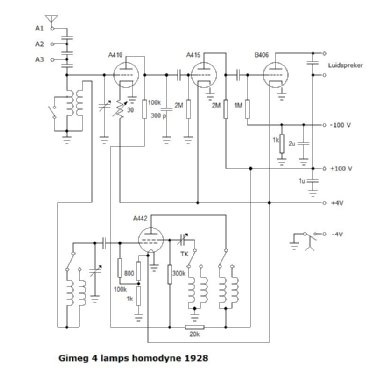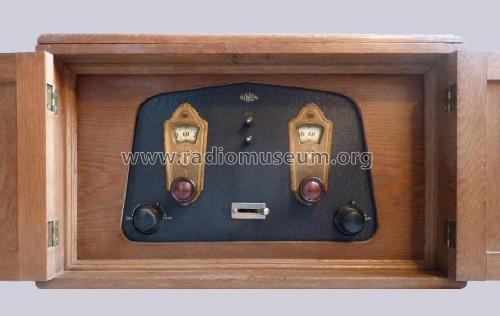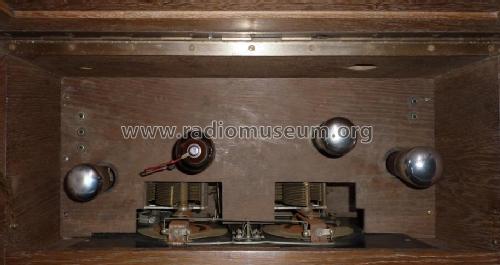Four-valve homodyne receiver
Gimeg; Amsterdam
- Pays
- Pays-Bas
- Fabricant / Marque
- Gimeg; Amsterdam
- Année
- 1928 ?
- Catégorie
- Radio - ou tuner d'après la guerre 1939-45
- Radiomuseum.org ID
- 262312
Cliquez sur la vignette du schéma pour le demander en tant que document gratuit.
- No. de tubes
- 4
- Principe général
- Principe spécial; Procédé spécial de réception. Qui peut donner des détails.
- Circuits accordés
- 2 Circuits MA (AM)
- Gammes d'ondes
- PO et GO
- Tension / type courant
- Piles (rechargeables ou/et sèches) / 4 & 100 & -9 Volt
- Haut-parleur
- - Ce modèle nécessite des HP externes
- Matière
- Boitier en bois
- De Radiomuseum.org
- Modèle: Four-valve homodyne receiver - Gimeg; Amsterdam
- Forme
- Modèle de table profil bas (grand modèle).
- Dimensions (LHP)
- 525 x 315 x 265 mm / 20.7 x 12.4 x 10.4 inch
- Remarques
-
Four valve homodyne (direct-conversion) receiver.
In oak cabinet with doors. The doors are decorated with coromandel wood. The top has a hinged lid with snap closure.
The knobs from left to right: rheostat for the mixer valve with the text "zwak/sterk" ("strong/weak"), antenna tuning, wave length switch with two push/pull switches, the upper one for the scale lights (remarkable for a battery set) and the lower one switching off the filament circuit of the valves, followed by oscillator tuning and reaction control (phase control for the oscillator). This remarkable circuit has not been frequently used in commercially manufactured receivers.
- Auteur
- Modèle crée par John Koster. Voir les propositions de modification pour les contributeurs supplémentaires.
- D'autres Modèles
-
Vous pourrez trouver sous ce lien 1 modèles d'appareils, 1 avec des images et 1 avec des schémas.
Tous les appareils de Gimeg; Amsterdam
Collections
Le modèle Four-valve homodyne receiver fait partie des collections des membres suivants.



